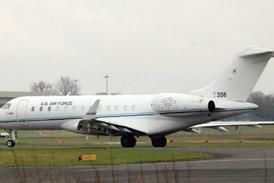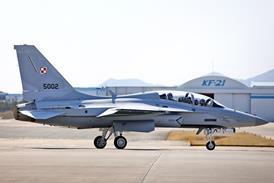The hole that developed in the fuselage of a Southwest Airlines Boeing 737-300 last year was caused by what the US National Transportation Safety Board describes as "pre-existing fatigue at a chemically milled step" - or in simpler terms, fatigue cracking.
The incident investigated by the NTSB took place on 13 July 2009, during a flight originating in Baltimore and bound for Nashville. But after losing cabin pressure, the aircraft was diverted to a safe landing in Charleston, West Virginia.
According to the NTSB, "post-incident examination of the airplane revealed fatigue cracking of the fuselage skin near the leading edge of the vertical stabiliser adjacent to the rupture. The fatigue cracking penetrated the fuselage skin and created an approximate 18 x 12in [45 x 30cm] flap in the skin that depressurised the airplane."
 |
|---|
The investigation revealed that the fatigue crack near the middle of the longitudinal crack appeared to completely penetrate the skin of the thickness by up to 7.6cm. "Scanning electron microscope examinations clearly showed microscopic features typical of fatigue progression, including areas of striations, in the longitudinal crack region," the NTSB reveals in its report.
The aircraft was delivered to Southwest in June 1994 and had accumulated around 42,500 cycles and 50,500h at the time of the incident.
"Immediately after the accident, we increased our ongoing maintenance inspections in the impacted area to include recurring detailed visual inspections and non-destructive tests - with a goal to not only meet but exceed known safety standards," Southwest says. Southwest inspected all of it aircraft but found no fuselage issues.
Following the incident, Boeing issued a service bulletin calling for "repetitive external inspections" to detect cracks in the fuselage skin. The US Federal Aviation Administration in January issued a new rule making those inspections mandatory.
"We worked closely with investigators throughout this process and we concur with their conclusions," Southwest says, adding: "We've taken aggressive measures to incorporate additional maintenance inspections, additive to existing programmes, in response to what was learned from Flight 2294."
Source: Flight International























